How Much Gold and Silver Should I Own?
Investing in Gold and Silver isn’t like buying Stocks and Bonds. Precious metals don’t just have a different risk profile, but the purpose they serve in your Portfolio is quite different.
For many investors, that makes it difficult to answer an essential question: How much Gold and Silver should I own?

Table of Contents
How Much Gold & Silver to Own: Expert OpinionsConventional Wisdom Says…Different Experts Have Different TakesHow Gold and Silver Operate in Your PortfolioHow Much Gold & Silver to Own: How to DecideWhat are Your Goals?What’s Your Risk Tolerance?
What’s Your Current Investment Allocation?What’s Your Investment Timeline?What Do You Plan to Do with Potential Gains?How Much Do You Need to Protect Yourself?Types of Gold and Silver InvestmentsHow Much Gold & Silver to Own: Only You Can Say
How Much Gold and Silver Should I Own: Expert Opinions
Gold and Silver are considered safe haven assets – that is, assets that help your Portfolio weather economic storms. They also provide essential diversification in a way few assets can, as prices move independently of the Stock market.
For these reasons, investors often turn to Gold and Silver to hedge against meltdowns, Inflation, deflation, interest rate movements, and financially unfavorable government policies. In this way, these Precious metals act similarly to insurance for your Investment Portfolio.
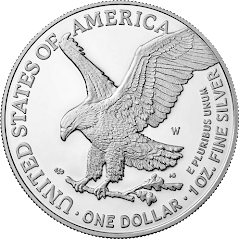
But when it comes to determining how much Gold and Silver you should own to accomplish your financial goals…well, that’s hard to say.
Conventional Wisdom Says…
The most common statistic (and one we often suggest as a baseline) is that Gold and Silver should comprise 5-10% of your Portfolio. When discounting home or Real Estate equity, some experts raise this value to 10-20%. The other 80-95% of your Portfolio can buy Stocks, Bonds, and tangible assets like Real Estate.

This range tucks enough of your Portfolio into safe haven assets to weather Inflation or high interest rates. At the same time, you won’t be too heavily invested in assets known for holding, not growing, their value.
Put it this way. If you buy too much Gold and Silver, you prevent the rest of your Portfolio from achieving higher growth. But if you buy too little, you expose your finances to other risks that traditional assets are known for.
Different Experts Have Different Takes
But just because conventional wisdom says 5-20% doesn’t mean that’s right for everyone. And even if it were, that’s still a pretty substantial range – how do you peg the right amount for you?
Here, too, experts are divided.
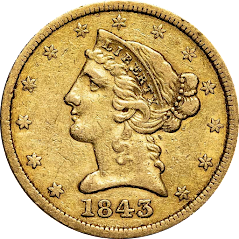
For instance, one MarketWatch journalist, Mark Hubert, suggests allocating just 4% to Gold. Writes Hubert, “4% is a good place to start in determining your Portfolio’s default allocation…. You would deviate from that allocation only if you believe…that investors worldwide, collectively, are wrong about Gold’s value relative to the Stock and Bond markets.”
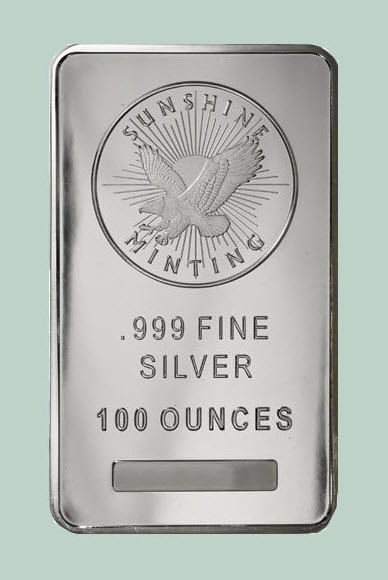
Perhaps a more notable opinion comes from CNBC’s Mad Money host Jim Cramer, who recommends a flat 10% Gold allocation. He holds that 10% is the “upper limit” because Gold is “an insurance policy, and no worthwhile insurance policy should be 20% .”
Meanwhile, Flexible Plan Investments LTD president Jerry Wagner, who launched the first registered Mutual fund with Gold bullion exposure, argues for a 20% Gold allocation. He contends that this level “is the appropriate exposure” for traditional Portfolios.
And famous Investment analyst, advisor, and Libertarian presidential candidate Harry Browne suggested that most investors should hold equally Stocks, Bonds, Golds, and cash at 25% each.
Unfortunately, with so many opinions floating around, knowing how much you should invest in Gold and Silver isn’t any simpler. And that’s because, ultimately, there’s no one simple answer.
To answer, “How much Gold and Silver should I own?” you have to think inside the box. Specifically, your personal financial box.
Consider How Gold and Silver Operate in Your Portfolio
Gold and Silver are renowned for their unique characteristics like:
- Physical tangibility
- The ability to be spent as currency
- An inability to be replicated or manufactured

- Price movements that don’t mirror other Financial markets
- Intrinsic values dependent upon factors like mining, usage, and global supply
As such, it doesn’t make sense to think of Precious metals in the same way as traditional assets – particularly securities. For example, with Stocks or Bonds, you might wonder about annual dividends, government or corporate management, or five-year appreciation.
But Gold and Silver aren’t privy to the same considerations, and their place in your Portfolio should be determined by other factors.
Think of Precious metals as insurance that hedges against market volatility and economic downturn. Instead of expecting these metals to produce massive gains overnight, their purpose is more to store Wealth for a rainy day.
That also means, like regular insurance, you shouldn’t wait to buy in until you’re in the middle of a crisis. (Often times, that’s actually when the price of Gold in particular rises as investor demand soars.) Instead, consider buying Precious metals ahead of time to sell for a profit or buoy your Portfolio during a downturn.
For some investors, Gold and Silver don’t just represent a hedge against volatility; they serve as a store of value in the event of a currency or banking collapse. While such scenarios are incredibly unlikely in developed countries, holding tangible value brings peace of mind to investors with such concerns.
In these cases, buying Gold and Silver is less about their return potential, and more about safeguarding against the supposed inevitable. Even so, that doesn’t negate the impact that these Precious metals will have on an investor’s Portfolio.
How Much Gold and Silver Should I Own: How to Decide
We’ve looked at a diverse set of opinions on how much you “should” invest in Gold and Silver. We’ve also looked at why Silver and Gold hold a unique place in each investor’s Portfolio, and what that means on a broader scale.
Now, we’re going to narrow our scope. While each individual has to determine how much Gold and Silver they should own for themselves, the following questions can help you decide.

What are Your Goals?
The most important question to answer is just why you’re buying Gold and Silver.
- Are you seeking short- or long-term gains? Portfolio diversification? A store of value?
- Are you hedging against financial or economic risks like currency depreciation?
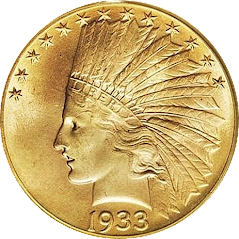
- Do you prefer collectibles, Bullion, or metal-related Investments (like Stocks or ETFs) that produce appreciation and dividends?
- Do you plan to use your tangible Investments as currency?
Once you get to the root of these questions, you can start determining Gold’s purpose in your Portfolio.
What’s Your Risk Tolerance?
Though Gold and Silver tend to appreciate over time, they’re often pockmarked by short-term volatility due to geopolitical or supply risks. These fluctuations can make investors nervous, particularly if you have a low tolerance for volatility.
However, if you’re using Precious metals to diversify your Portfolio, their short-term price movements should be offset by your other holdings, and vice-versa.

What’s Your Current Investment Allocation?
If your current Portfolio is primarily comprised of Stocks and Bonds, then Precious metals can provide much-needed diversification. For investors who don’t yet own Gold and Silver, the amount you should buy now (or over time) may be informed by how much you need to “catch up” to your desired allocation.
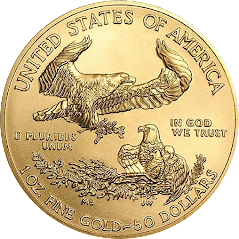
What’s Your Investment Timeline?
Investors seeking short-term returns on their Precious metals may find themselves disappointed. Though Gold and Silver are known for short-term volatility, their scope (and direction) don’t always produce the massive gains that can be found in the Stock market.

Generally, it’s wise to think of the Precious metals as long-term stores of value, rather than traditional income-producing assets. (Especially because tangible metals don’t produce interest or dividends like traditional assets.)
What Do You Plan to Do with Potential Gains?
If you plan to hoard Gold and Silver until the next price spike, consider what you plan on doing when you do sell. Are you hinging your home-buying plans on Precious metals, or do you plan to plow the proceeds into other Investments? Will your stash support your current standard of living if it comes to it, or do you have a backup plan?

How Much Do You Need to Protect Yourself?
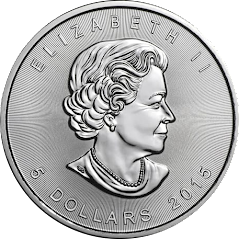
In a similar vein, consider how much Gold and Silver you’d need to sell at its current or projected future price to protect your finances. Beyond that, consider what its price and its allocation in your Portfolio would be worth.
For instance, if Gold makes up the recommended 10% of your Portfolio, is that enough to fund your lifestyle for six weeks? Months? Years? Will that even make a dent in this month’s rent?
What Kind of Gold and Silver Investments Are You Making?
Consider also how you plan to buy into these assets.
For instance, physical Gold and Silver offer tangibility, but also incur storage and insurance costs.
With metal-owning ETFs, you lose the tangibility while sharing those costs with other investors. However, you may still incur a 28% collector’s tax on Investment sales.
One of the best ways to buy Gold and Silver is with a Gold IRA. These individual Retirement accounts shield you from tax impacts by deferring or eliminating the tax burden entirely. (Depending on if you choose a traditional or Roth IRA.) However, early withdrawals and distributions may incur penalties.
Another option is to invest in metal-related Investments like mining Stocks, ETFs, and Trusts. These Investments boast additional perks like potential appreciation and dividends. That said, they also come with exposure to similar Portfolio risks as other Stocks.

How Much Gold and Silver Should You Own? Only You Can Say
Conventional wisdom states that you should limit your Precious metals exposure to 5-10% of your Portfolio.
But not everyone’s financial situation is conducive to following conventional wisdom. Maybe you have a higher or lower net worth than average, and so traditional advice would skew your holdings unfavorably. Perhaps your personal financial goals require larger or smaller Investments in Precious metals.
Whatever your situation, only you can decide how much Gold and Silver you should own to round out your Portfolio.
As you continue investigating Investments in Gold and Silver, be sure and explore self-directed Precious metals IRAs. These accounts can help you meet your investing goals while taking advantage of the tax benefits offered by IRA accounts. Gold IRA companies (the good ones, anyway) focus on educating their prospective clients (that's you) without pressuring them into making a decision. Based on customer reviews, Goldco is one of these companies and they have been helping their clients for over 16 years.
About Satori Traders
Satori Traders LLC is a California-registered Investment Advisor specializing in the Precious metals.
Bryan V Post is a California-registered Investment Advisor Representative and the founder of Satori Traders.
Bryan has worn numerous hats during his life: Engineer, Portfolio manager, Precious metals Investor, Technical analyst, Proprietary trader, Swing trader.
https://satoritraders.com/precious-metals/review/goldco/much/
